Quite a few people have asked me about the things I’ve found most useful during my c-section recovery, so here they are – I’ve divided the products into two groups, one for immediately after surgery and the other for later on down the line. Please do add your own suggestions for the “c-section survival kit” in the comments box – for new readers, I must say that the comments section is quite often an amazing place to go if you’re looking for a bit of support or extra information. Lots of great ideas from other people, lovely consideration shown for one another and beautifully written mini-posts. Always worth checking out.
C-Section Essentials: Immediate

Not particularly glamorous, this survival kit selection, but my God do I wish I’d had these things to hand when I’d come out of hospital! My worst experience, perhaps of the whole c-section procedure, was the pain from the air trapped inside my body after the operation. I thought I was having a heart attack! Then I thought I’d been paralysed from the chest upwards! So, anything and everything to relieve trapped wind: peppermint capsules, peppermint water (hard to get hold of round by me, but by the time I’d located some my wind was gone!), Tums, peppermint tea bags (though the tea isn’t half as effective as the water) and a laxative to get things moving in the bowel department. My midwives recommended Lactulose and it worked pretty well for me…
Other essentials? Painkillers, as prescribed (I was told to take paracetamol and ibuprofen, which was more than adequate so long as I took them at the maximum dose and as regularly as was safe), lots of water (I used a flask so that I could have it next to me in the bed) and a Kindle for keeping me awake for night feeds when I could barely remember my name I was so tired…
There are no “scar maintenance” products here, because the wound dressing will probably still be on when you get home (especially if your hospital, like mine, has a 24 hour kick-out policy – aka “enhanced recovery programme”!) and then the midwives will check your stitches in the first week. I think, personally, that it’s a bit too soon to start clarting about with creams and potions and scar-reducing sheets and so on – maybe because I’m so squeamish, but also because the wound is still so…raw.
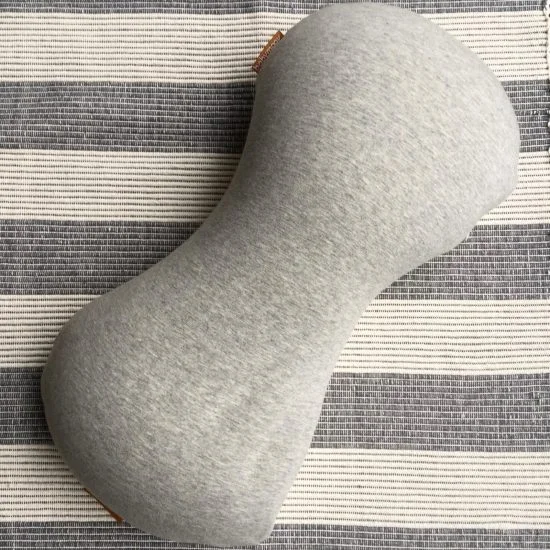
One thing I did find to be brilliant, though, in terms of protecting the scar region, was my firm little cushion from BabyMoov. I used this all the way through pregnancy to support my back in bed, my legs on the sofa and my neck when I’ve been working on my laptop with my head against the headboard. But it was absolutely invaluable when I came out of hospital – small enough to easily manoeuvre about my person, I could easily swap it from behind my back to put it on my lap or next to my hip to support the baby’s head during breastfeeding. And it’s great for holding against a scar when you have a toddler about and worried they might kick you, or for when you know you’re about to sneeze or cough and you hate that feeling that your scar might pop open! It’s called the Mum & B cushion and you can find it online here – it’s £35.
C-Section Essentials: Ongoing
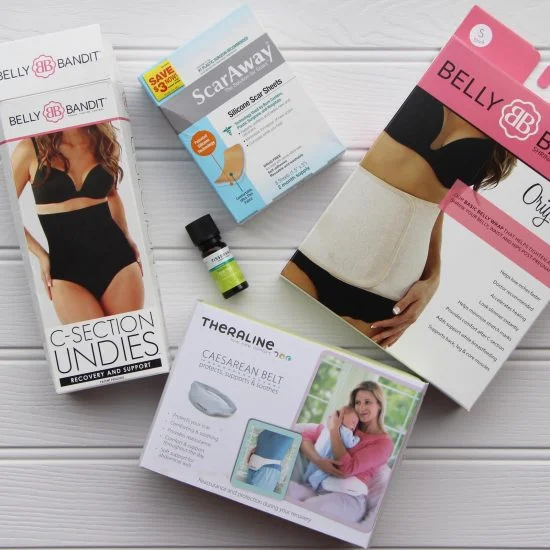
My ongoing essentials for c-section recovery are sort of dependent on what suits the individual. I’ve been testing out various support belts and underwear items and have mixed feelings about them – I really do think it depends on your size, your lifestyle and what you’re hoping to achieve.
For those who want support in the tummy region then the belts from Belly Bandit are tight and reassuring, though I think if you’re sitting up for long periods (eg breastfeeding in bed all day after a c-section!) then it’s a bit uncomfortable to have a big wide belt on. I’d say it’s better saved for a little later on when you’re more mobile and upright. It’s quite a nice feeling to have the support around your middle, actually, as it sort of props your lower back up as well as your tummy! It’s sold as a “shaping” aid, to help you get your middle section into shape, but for me it’s the support element that’s useful. I’m too busy trying to survive and stay sane without worrying about my waistline! You can find the Belly Bandit Original online here – it’s £49.95. They also do “undies”, a long pair of extremely tight knickers that pull you in – I prefer these to the belt, because they feel more pliable and allow for more movement in your middle. They do, however, have a long row of hooks, so you need to have nimble fingers and be able to pull the fabric together tightly at the same time as doing them up! It’s a two-handed job for sure, there’s no putting these on in a hurry! They are specifically aimed at c-section recovery, with targeted compression in the scar area and a special antibacterial fabric, though – again – I’d want to wait a few weeks before starting with these, if only because I’m not sure they’d accommodate the enormous maternity mattress pads one needs to wear postpartum… Find the c-section undies here.
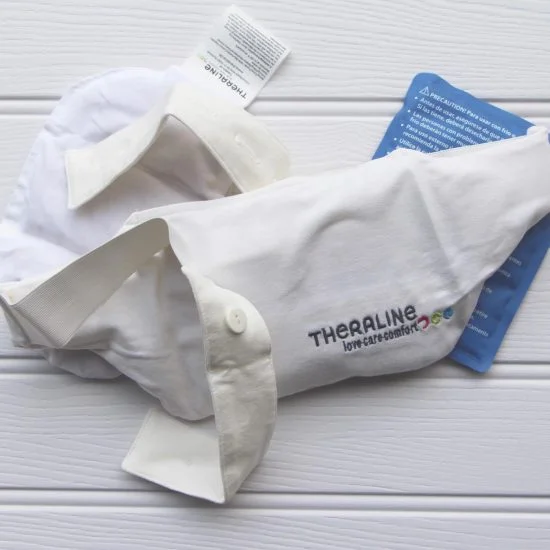
Also tested: the Theraline c-section belt. This is a sort of soft “bum bag” (or “fanny pack” if you’re in the US!) with a pocket to contain the c-section-recovery weapon of your choosing, whether it be a rigid protective “shield”, a cold compress you store in the fridge or a hot pad that you heat up in the microwave. It’s like the Swiss Army Knife of bum bags. It’s also bulky and very obvious, so it’s one to wear around the house and not underneath your Roland Mouret dress. (Joke, obviously. Who’s out in a Roland Mouret dress after a c-section?!) Too bulky for me, really, but the shield is a great idea (and it’s not so bulky with just the slimline shield slipped into the pouch) and I bet the heated pad is great for period pain, once you get your periods back, which makes this the gift that keeps on giving. Personally I didn’t want my c-section wound to be heated up or cooled down, I just wanted it to stop freaking me out, so only the shield part of this appealed. You can find the Theraline belt online here. It’s £20.
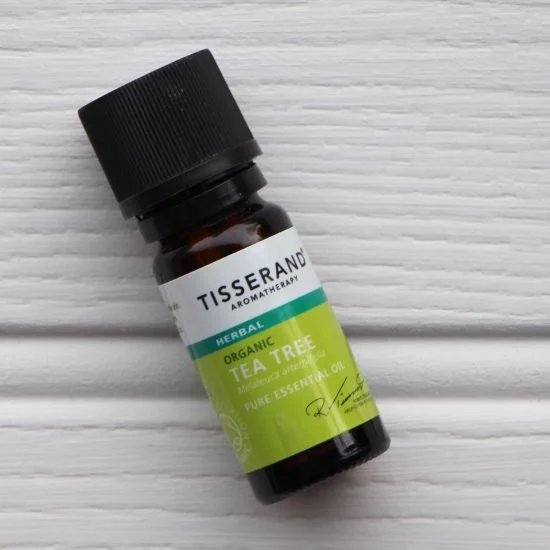
The best postpartum scar purchase? Tea Tree Oil. Once my stitches were out (had dissolvable the first time, but not the second time for some reason, I forgot to ask why) I had a little tear that opened up along the scar. I stressed all day and night for about a week, thinking it would get infected, and even went to the GP to get it examined and dressed. Dressing it didn’t help; I still had a little open split that was raw on the inside after another week. Then I started diluting tea tree oil in the lid of a shampoo bottle when I was in the shower, and after I’d turned the water off, as a last rinse, I splashed the solution along my scar before getting out. Then I let it air dry. I swear the split healed within days! Maybe it would have done anyway, I don’t know, but it seemed to keep the whole area a lot fresher. I used the Tisserand oil here.
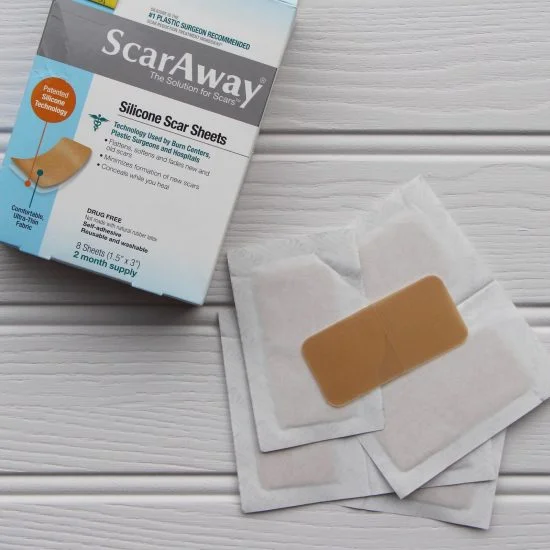
And the one I’m currently testing? The silicone scar sheets from Scar Away. I bought them on Amazon here – they seem quite pricey (£23) for what amounts to a box with four sticking plasters inside, but they do seem to be making my scar less angry-looking and flatter. Apparently it’s what plastic surgeons use on burns and serious scars (can anyone verify this?!) but for me one of the best things is that they feel as though they cushion the scar slightly, and they stop fabric from rubbing up against it, which is the most annoying feeling ever invented. I’ll let you know how I get on in the longterm with these – you take them off at the end of the day and wash them and then they go really really sticky, so much so that when lie them flat to dry off it’s like a comedy trying to get them unstuck from your fingertips. It took me three whole minutes this morning, in the end I had to prod it off with the handle end of a makeup brush, and then that stuck to it, so I just left it stuck to the brush!
And finally, the most important c-section recovery thing of all: lots of help. Pull in all the help you can possibly get, and think about this before you go in for the section so that people have a place to stay or know which dates you need them for. I know this might sound obvious, even slightly silly, but I do think that it makes all the difference between a good recovery and a hellish one. If you are forced to get out of bed all of the time to let the dog out/see to your toddler/make tea and toast/answer the door to the postman then there’s no way you’re going to regain your strength as fast as if you can sleep all day long and be spoon-fed caviar from the finest silverware. I think that when you come out of hospital you have a false sense of how well you are – you’ve managed to walk to the car, to do a journey, to get back out of the car and climb the stairs, all after major surgery so you must be ok, right? You’re a rare superwoman – what the hell were these other people talking about? Recovery? Pah!
Then it hits you. Hours, maybe days later. You’ve had major surgery! What on earth were you thinking trying to go to the supermarket on day 2? You really need to rest. Only get up, if you can help it, to go to the loo. Get someone else, if at all possible, to do anything and everything that isn’t a toilet trip – change the baby’s nappy, fetch you water, pass you the remote control. Pretend you’re the laziest person that ever lived and then get even lazier. For me, having a lot of help was the singular most important thing and I still struggled with my recovery! So plan in advance, pull in favours – family, friends, paid help if you can possibly afford it and there’s no alternative option. Because I can guarantee you that chasing your dog about a paddock when you’re two weeks postpartum, trying to get him to drop a dead pigeon and come back inside, is not a lot of fun. (Happened the first time. In a heatwave. When we had no house and were living in a holiday let and there wasn’t really enough room to have anyone to stay and my husband had gone out to work and I’d promised that “everything would be absolutely fine”. Goodness, I don’t think on that time fondly!)
I’m making it all sound rather dreadful, and it’s not – I’ve felt worse with a bout of the flu – but I think it could be if you’re not adequately prepared. Have everything you need within easy reach, stock up on the painkillers and drink plenty of water.

0 Comments